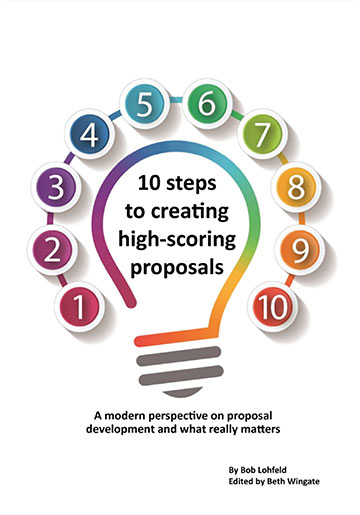How to Survive and Thrive Under FAR Part 1 Changes

This is one in a series on the impact of the Revolutionary Federal Acquisition Regulations (FAR) Overhaul (RFO) changes on government contractor (GovCon) business development (BD), capture, and proposal programs. This article focuses on changes to FAR Part 1 – Federal Acquisition Regulations System (FARS), and identifies the opportunities and risks that industry growth teams face as a result of FAR 2.0 acquisition policy changes.
Introduction to FAR 2.0
On May 6, 2025, the Office of Management and Budget (OMB) launched Phase 1 of the Revolutionary FAR Overhaul (RFO), also called FAR 2.0[1]. The stated goal: to reduce red tape and empower agencies to buy more flexibly and be more mission-aligned. The changes proposed for FAR 2.0 are implemented as FAR deviation guidance, with formal change approvals planned for late FY25 and beyond.
FAR 2.0 shifts the paradigm, relocating non-statutory FAR content as guidance in non-binding federal “buyer guides” or agency acquisition playbooks. The philosophy: decentralize acquisition authority, rely on statutory compliance, and empower agencies to build agile, mission-first frameworks. Under this model, only provisions required by law or otherwise deemed essential remain in the FAR.
The impact on both industry and government is significant. BD teams must now engage earlier and deeper with agencies. Contracting professionals must build familiarity with emerging buyer guides. Oversight bodies, such as the Defense Contract Audit Agency (DCAA) and the Defense Contract Management Agency (DCMA), will face a new level of fragmentation risk as agency-level acquisition standards proliferate. These profound changes create both opportunities and risks that could affect solicitation quality and timelines.
This article examines the proposed changes to FAR Part 1 – Federal Acquisition Regulations System and explores their implications for capture, proposal, oversight, and procurement professionals alike.
Overview of FAR Part 1 Evolution
Originally issued in 1984, FAR Part 1 provided structure, governance, and purpose to the federal acquisition system. It unified fragmented agency policies and introduced core principles such as best value, competition, public trust, and the use of commercial products where practical.
FAR 2.0 reimagines this structure for a digital, mission-driven era. FAR 2.0’s changes to FAR Part 1 reflect the idea that the FAR needs to exist in a digital age less as a rulebook and more as an agile playbook that is a framework for government acquisition. FAR 2.0 increases emphasis on mission, speed, schedule, risk management, and prioritization of acquisition from commercial sources, as well as adding two new, noteworthy features: a quick-turn deviation guidance approval process and a four-year sunset on non-statutory text. Much of the original FAR Part 1 content has been dropped or moved to external sources.
An Examination of the Shift in FAR Part 1 Approach
Table 1: Significance and Impact of FAR Part 1 Changes
| Title and Reference | Description of Change | Implication |
| Addition of acquisition guides (§ 1.101(a)(3)) | Adds acquisition guides as part of the FARS framework as an advisory source of best practices. Note that this change makes such guides part of the FARS but not the FAR itself. | Industry must track, analyze, and respond to agency-level use of buyer guides |
| Revised guiding principles (§ 1.102) | Changes acquisition focus to emphasize (i) mission first, (ii) time value, (iii) risk management over avoidance, (iv) commercial sourcing, and (v) delegated authority “to the lowest level.” | Reframes FARS’ guiding principles to an action-orientation that empowers lowest-level decision-makers. Industry can incorporate these priorities as background to score strengths against solicitation evaluation criteria[2] |
| Commercial item preference (§ 1.102) | Changes “Satisfy customer… for example – (ii) Maximizing the use of commercial and products and services…” to “The System will – (3) Maximize buying commercial products or commercial services rather than Government-unique solutions.” | Industry must lead with commercial offerings to remain competitive |
| Removal of Acquisition 360 survey clause and other feedback mechanisms (Original § 1.102-3) | Removes content that encourages obtaining feedback from industry, user experience on acquisition processes, and use of provision 52.201-1 Acquisition 360: Voluntary Survey. | Signals de-emphasis on formal industry feedback and experience tracking |
| Tightened certifications policy (§ 1.106) | States that a new requirement for certification is allowed only in accordance with 41 U.S.C. 1304. Removes the condition that new certifications can be added when: “(b) Written justification for such certification is provided to the Administrator for Federal Procurement Policy by the Federal Acquisition Regulatory Council, and the Administrator approves in writing the inclusion of such certification requirement.” [Original FAR § 1.106] | Proposal teams may challenge RFP certification requests that lack statutory grounding |
| New 4-year regulatory sunset (§ 1.109) | The (limited) non-statutory content retained by the FAR lapses after four years unless the FAR Council renews it. | Watch for references to expired provisions in RFPs — potential protest grounds |
| Streamlined deviation process (§ 1.304-1.305) | Shortens timelines for FAR Council approval of agency-specific class deviations, with approval to proceed automatically granted when the timeline isn’t met. Eliminates the requirement for an agency official, who is authorized to approve a class deviation, to consult with the chairperson of the Civilian Agency Acquisition Council (CAAC). | Faster agency-level deviation approvals; more policy divergence likely |
The FAR Part 1 changes reflect the government’s acquisition priorities—streamlining for speed, reducing cost by mandating preference for commercial products and services, decentralization through transfer of authorities and responsibilities previously held in the FAR to acquiring agencies, and transformation to a digital framework rather than written regulation. The details are formalized in RFO changes to other FAR Parts.[3]
What This Means for Capture, Proposal, and Oversight Professionals
1. Study the Acquisition Guides
Buyer guides will carry increasing influence. Contracting Officers may reference them in solicitations or apply their guidance informally. Capture teams must:
- Profile agency preferences and their guide interpretations
- Train BD teams and AI tools on agency-specific playbooks
- Distinguish mandatory FAR clauses from non-binding advisory language
🔍 Tip: Update your compliance matrix to flag guidance-based recommendations separately from mandatory clauses.
2. Lean into Pre-Solicitation Engagement
FAR 2.0 decentralizes power to the agency level. This makes early influence with acquiring agencies more important than ever. GovCon teams must:
- Build relationships with Contracting Officers and PMs
- Recommend evaluation factors and instructions aligned with agency goals
- Shape requirements early; post-RFP is usually too late
⚠️ Note: Ensure engagement aligns with Procurement Integrity Act (PIA) standards — the loosening of formal guidance could increase protest risk or perception of unfair advantage.
3. Prepare for Oversight Fragmentation
Oversight entities, like DCAA and DCMA, will need to adapt. With more policy held at the agency level, there’s a risk of:
- Inconsistent audit standards
- Difficulties tracing compliance across agencies
- Challenges for contractor internal controls when frameworks differ from agency to agency
🔍 Agencies will need training, documentation, and, potentially, new Contract Audit Follow-up (CAFU)[4] processes to ensure consistent application of the new rules.
Conclusions
FAR 2.0 represents a foundational shift — from centralized rulebook to decentralized acquisition framework. These changes align with the April 2025 Executive Order, “Restoring Common Sense to Federal Procurement,” which calls for:
- Removing unnecessary regulations
- Empowering agencies to meet mission needs
- Encouraging simplicity, speed, and commercial engagement
GovCon leadership must prepare—now—for these changes! Key takeaways:
- Understand where power is shifting (from FAR to buyer guides)
- Adapt BD, capture, and proposal strategies to match agency-specific frameworks
- Monitor RFPs for expired clauses, unauthorized certifications, and deviation-based instructions
- Watch for oversight inconsistencies as decentralization grows
These changes will have a profound impact on how GovCon companies conduct capture, prepare proposals, and, when needed, contest award outcomes. If you need help applying new FAR regulations to your next capture or proposal, please contact Lohfeld Consulting; our experienced contracting officers and subject matter experts (SMEs) can assist you.
Relevant Information
By Bruce Feldman and Jacob Bertram
Bruce Feldman, Vice President, Lohfeld Consulting Group. Bruce brings more than 30 years of experience as a subject matter expert (SME) in business development, capture management, and proposal development specializing in Space and National Intelligence programs for the U.S. Air Force (USAF), U.S. Space Force (USSF), Intelligence Community (IC), Office of the Secretary of Defense (OSD), Department of Defense (DOD) 4th Estate, and Combatant Commands. He leads Lohfeld Consulting Group’s Artificial Intelligence (AI) initiatives and is the lead trainer for our Generative AI for Proposal Professionals classes, a trainer for our Capture Management and Strength-Based Winning® classes, as well as a consulting advisor.
Jacob Bertram is a senior leader in the federal procurement industry with over 20 years of experience spanning GSA, the Department of Energy, DCMA, and DCAA. He currently advises Fortune 500 companies, government agencies, and federal contractors on acquisition strategy, pricing, audit readiness, and operational efficiency. Jacob is DAWIA Level III certified in Contracting and a member of the Defense Acquisition Corps.
Lohfeld Consulting Group has proven results specializing in helping companies create winning captures and proposals. As the premier capture and proposal services consulting firm focused exclusively on government markets, we provide expert assistance to government contractors in Capture Planning and Strategy, Proposal Management and Writing, Capture and Proposal Process and Infrastructure, and Training. In the last 3 years, we’ve supported over 550 proposals winning more than $170B for our clients—including the Top 10 government contractors. Lohfeld Consulting Group is your “go-to” capture and proposal source! Start winning by contacting us at www.lohfeldconsulting.com and join us on LinkedIn, Facebook, and YouTube(TM).
Sources:
[1] https://www.whitehouse.gov/presidential-actions/2025/04/restoring-common-sense-to-federal-procurement/
[2] We are seeing this same emphasis manifest in direction to prioritize acquisition of commercial products and to use non-FAR-based acquisition tools such as Other Transaction Authorities (OTA).
[3] For examples, see previous Lohfeld Consulting articles on RFO changes to FAR Part 10 and Part 34.
[4] https://www.acquisition.gov/daffars/mp5315.407-90-contract-audit-follow-cafu
Paperback or Kindle
10 steps to creating high-scoring proposals
by Bob Lohfeld
contributors Edited by Beth Wingate
Subscribe to our free ebrief
Teaming friends, frenemies, and enemies—12 tips to mitigate harmful effects
Did you know that contracting officers spend up to 20% of their time mitigating disputes between teaming partners? In an informal poll we conducted on LinkedIn last month, 40% of respondents classified their teaming partners as “frenemies” on their last bid.
Explore Further
- Advice (539)
- AI (28)
- APMP (18)
- Army MAPS Contracts (3)
- Business Development (294)
- Capture Management (266)
- Complex Technology Grants Services (26)
- Favorite Books (5)
- GenAI (4)
- Go-to-Market (27)
- Graphics (5)
- Lohfeld Books (2)
- NASA SEWP VI Contracts (2)
- Navy SeaPort-NxG Contracts (2)
- NIST MSE Grants (1)
- NIST NAPMP Grants (2)
- Past Performance (63)
- Post-submission Phase (14)
- Pre-RFP Preparation (264)
- Proposal Management (339)
- Proposal Production (75)
- Proposal Reviews (38)
- Proposal Writing (107)
- Pursuit Phase (108)
- Research Report (4)
- Resources (63)
- Tools & Tips (421)
- Training (13)
- Uncategorized (223)

Sign Up for INSIGHTS and Download your FREE book
We'd love to help you with your proposals. Enjoy our complimentary Lohfeld Consulting Group Capture & Proposal Insights & Tips book with your FREE subscription to our Insights Newsletter.
GET YOUR FREE BOOK



